All reports
Mantle cell lymphoma
·
Jan 23, 2025
What is mantle cell lymphoma? A guide to MCL and common medical terms
An essential guide to navigating mantle cell lymphoma: including what it is, treatment options and an overview of key medical terms
Reports are in beta and continually improving. They are not a substitute for professional medical advice. Please contact us to give feedback.
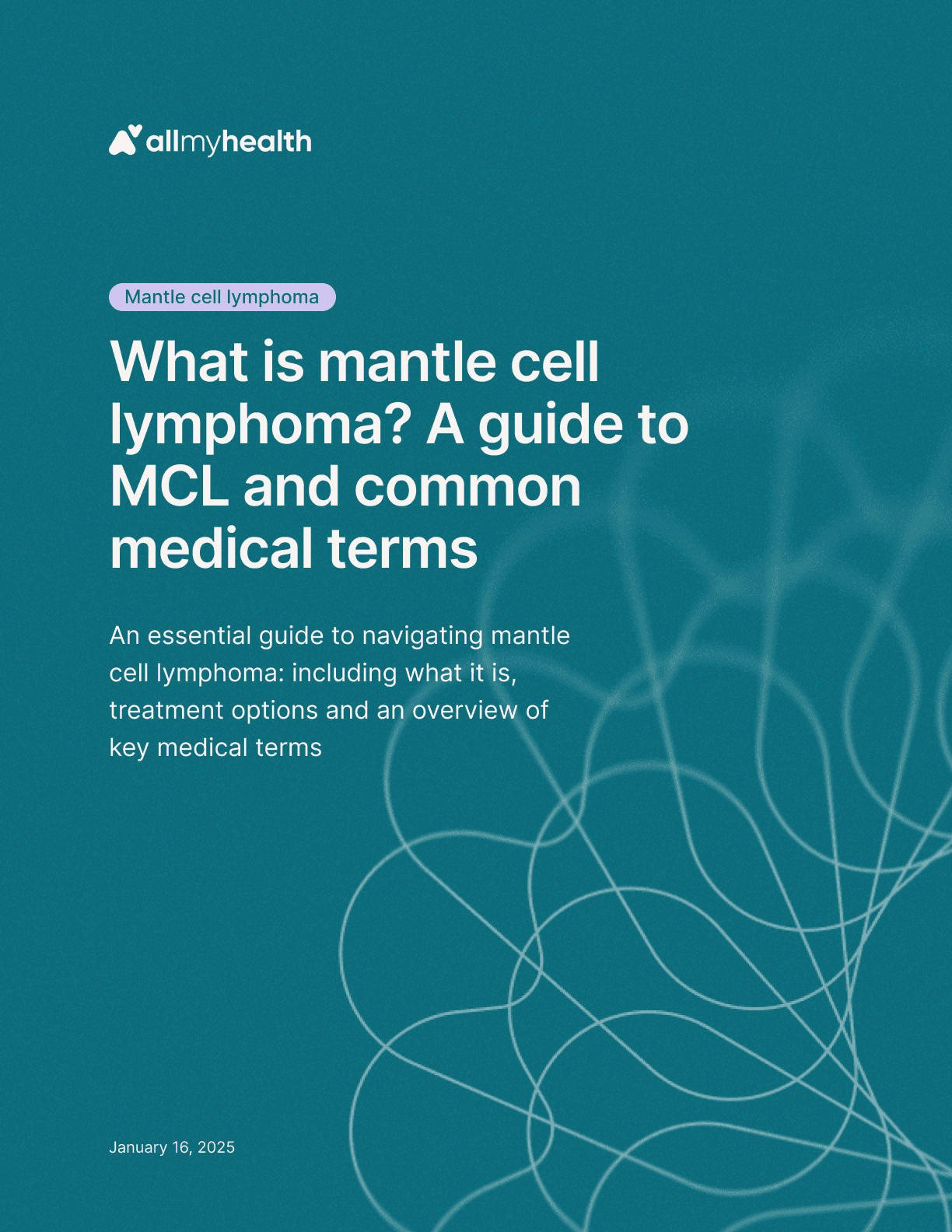
Stay informed
This report was published in our weekly newsletter and on our community page. Follow to stay up to date with the latest news and research relevant to your condition.
Listen to the audio version
Introduction
It can be overwhelming to receive a diagnosis like Mantle Cell Lymphoma (MCL). You likely have many questions and may feel confused by the medical terminology used to describe your condition. This pamphlet aims to break down those complex terms in a clear and easy-to-understand way, empowering you to navigate your diagnosis and treatment journey with greater confidence.
What is Mantle Cell Lymphoma?
Mantle cell lymphoma (MCL) is a type of cancer that affects a specific kind of white blood cell called a B-lymphocyte [1]. These cells, often simply called lymphocytes, are like tiny warriors in your immune system's army, helping your body fight off infections. Think of them as the body's security guards, always on the lookout for harmful invaders.
In MCL, some of these security guard lymphocytes become cancerous. This means they start multiplying out of control, like weeds in a garden, and form tumors in your lymph nodes [1]. Lymph nodes are small, bean-shaped glands found throughout your body, kind of like checkpoints where your immune system cells gather and monitor for threats. They are located in areas like your neck, armpits, and groin.
MCL is a subtype of non-Hodgkin's lymphoma (NHL), which is a broader category of lymphomas [2]. It's like saying MCL is a specific type of apple within the larger category of fruits.
While MCL is generally considered an aggressive form of lymphoma, meaning it can grow and spread quickly, it often starts by growing slowly [3]. This means it might not cause noticeable symptoms initially [4]. Early detection of MCL can be crucial in improving treatment outcomes and increasing the chances of achieving long-term remission or even a cure [4].
However, as the cancer progresses, it can spread from the lymph nodes to other parts of your body, including your bone marrow (the spongy tissue inside your bones where blood cells are made), spleen (an organ that filters your blood), and digestive system [3].
Common Symptoms of MCL:
Some common symptoms you might experience with MCL include [1]:
Loss of appetite and weight loss
Fever
Night sweats
Nausea or vomiting
Swollen lymph nodes in your neck, armpits, or groin
Heartburn, belly pain, or bloating
A sense of fullness or discomfort from enlarged tonsils, liver, or spleen
Pressure or pain in the lower back, often going down one or both legs
Fatigue
It's important to note that these symptoms can also be caused by other conditions, so it's essential to see your doctor for a proper diagnosis if you experience any of them.
Understanding the Stages of Mantle Cell Lymphoma
Staging is a way for doctors to describe how far cancer has spread in the body. It helps them determine the best treatment approach and provides an idea of what to expect. For MCL, the stages are similar to those used for other types of lymphoma. Here's a simplified explanation:
Stage I: The cancer is found in a single lymph node region (like one group of lymph nodes in your neck) or in one organ outside the lymph nodes [5].
Stage II: The cancer is found in two or more lymph node regions on the same side of the diaphragm (the muscle that separates your chest and abdomen), or it has extended from a single lymph node region into a nearby organ [5].
Stage III: The cancer is found in lymph node regions on both sides of the diaphragm [5].
Stage IV: The cancer has spread widely into multiple organs outside the lymphatic system, such as the bone marrow, liver, or lungs [5].
Each stage can also be classified as A or B. "A" indicates that you don't have symptoms like fever, weight loss, or night sweats, while "B" means you do experience these symptoms [5].
Pleomorphic Variant:
There is a variant of MCL called the "pleomorphic variant” [5]. In this variant, the lymphoma cells have different shapes and sizes when viewed under a microscope. This variant may sometimes behave more aggressively than typical MCL.
It's important to remember that these stages are just one factor doctors consider when determining the best treatment approach for you. Your overall health, age, and other individual factors also play a role.
Treatment Options for Mantle Cell Lymphoma
There have been significant advancements in MCL treatment in recent years, offering more options and hope for patients. Your doctor will consider several factors, including your overall health, the stage of your cancer, and your personal preferences, to create a personalized treatment plan. Treatment is not one-size-fits-all, and your doctor will carefully consider your individual needs and circumstances [7]. Here are some common approaches:
Watchful Waiting: In some cases, if the lymphoma is slow-growing and not causing significant symptoms, your doctor may recommend watchful waiting. This involves close monitoring of your condition without immediate treatment [3].
Chemotherapy: This treatment uses drugs to destroy cancer cells. It's like using powerful weed killers to get rid of unwanted plants. Chemotherapy is often used as an initial treatment for MCL, sometimes in combination with other therapies [3].
Immunotherapy: This approach helps your immune system fight cancer more effectively. It's like giving your body's security guards extra training and better weapons to fight off invaders. Immunotherapy can involve medications that stimulate your immune cells or therapies like CAR T-cell therapy, which modifies your own T-cells (a type of lymphocyte) to recognize and attack cancer cells [3].
Targeted Therapy: These drugs specifically target molecules involved in cancer cell growth and survival. It's like using a special key to unlock and disable the control center of the cancer cells [7].
CAR T-cell Therapy: This is a type of immunotherapy where your own T-cells are collected from your blood and modified in a laboratory to have special receptors that can recognize and attack cancer cells. These modified T-cells are then infused back into your body to fight the cancer [7].
Stem Cell Transplant: This procedure involves replacing your bone marrow with healthy stem cells, which are like the master cells that can produce all types of blood cells. It's like resetting your body's blood cell factory. Stem cell transplant can help your body produce healthy blood cells after intensive chemotherapy or radiation therapy. It's typically considered for patients who are younger and have good overall health [7].
Maintenance Therapy: After initial treatment, maintenance therapy may be used to help keep the cancer from returning. This often involves ongoing treatment with immunotherapy or targeted therapy. It's like continuing to take medication to prevent a disease from coming back, even after you feel better [3].
For older patients, doctors often consider less intensive treatment options, as they may not be able to tolerate the side effects of aggressive chemotherapy regimens or stem cell transplant [9].
Side Effects of Treatment
It's natural to be concerned about potential side effects of treatment. While each person's experience is unique, here are some common side effects associated with MCL treatments:
Chemotherapy: Nausea, vomiting, hair loss, fatigue, increased risk of infections (because chemotherapy can lower your white blood cell count), and low blood counts (which can cause anemia, easy bruising, or bleeding) [10].
Immunotherapy: Flu-like symptoms (such as fever, chills, and muscle aches), skin reactions (like rashes or itching), and fatigue [4].
Targeted Therapy: Diarrhea, skin rashes, and bleeding problems [11].
Stem Cell Transplant: Infection, graft-versus-host disease (where the transplanted cells attack your body), and mouth sores [10].
Your healthcare team will discuss potential side effects in detail and provide strategies to manage them effectively. They will work with you to minimize any discomfort and ensure you receive the best possible care.
Prognosis and Outlook
The prognosis for MCL has improved significantly with advancements in treatment. While it was once considered incurable, recent progress has made it possible to achieve long-term remission or even a cure in some cases [4].
The five-year relative survival rate for MCL is around 55%, meaning that more than half of people diagnosed with MCL are alive five years after their diagnosis [12]. However, it's important to remember that these statistics are based on past data and don't predict what will happen for any individual patient.
Several factors can influence your prognosis, including your age, overall health, the stage of your cancer, and how well you respond to treatment [13]. Your doctor can provide more personalized information about your outlook based on your specific situation.
It's important to maintain hope and a positive attitude throughout your treatment journey. Many people with MCL live long and fulfilling lives, especially with the advancements in treatment and supportive care available today.
New Research and Clinical Trials
Researchers are constantly working to develop new and better treatments for MCL [14]. Clinical trials are an important part of this process, allowing doctors to test new therapies and improve outcomes for patients. Some areas of active research include:
New targeted therapies and immunotherapies: These treatments aim to attack cancer cells more precisely with fewer side effects [4].
CAR T-cell therapy: This promising approach has shown encouraging results in treating MCL [7].
Combination therapies: Combining different treatments may improve their effectiveness [14].
Eligibility for Clinical Trials:
Clinical trials often have specific eligibility criteria, meaning they are looking for participants who meet certain requirements, such as age, type and stage of cancer, and previous treatments [15].
Finding Clinical Trials:
If you're interested in learning more about clinical trials, your doctor can discuss whether participating in a clinical trial might be an option for you. You can also find information about clinical trials in your area through online resources like ClinicalTrials.gov [15].
Support Groups and Resources
Living with MCL can be challenging, but you don't have to go through it alone. Connecting with others who understand your experience can provide valuable support and encouragement. Here are some resources that can help:
The Lymphoma Research Foundation: This organization offers a Lymphoma Support Network that connects patients and caregivers with trained volunteers who have had similar experiences [18].
The Leukemia & Lymphoma Society (LLS): LLS provides support groups, educational resources, and financial assistance programs for people with blood cancers [19].
CancerCare: This organization offers free professional support services, including counseling and support groups, for people affected by cancer [20].
CanCare: This non-profit organization connects cancer patients with trained survivor volunteers who offer one-on-one support [21].
Key Medical Terms for Mantle Cell Lymphoma Patients
Understanding some key medical terms can help you better understand your condition and communicate with your healthcare team. Here are a few important ones:
B-lymphocytes (B-cells): A type of white blood cell that plays a crucial role in the immune system by producing antibodies to fight infections. In MCL, these cells become cancerous [22].
Lymph nodes: Small, bean-shaped glands located throughout the body that filter harmful substances and contain immune cells. MCL often starts in the lymph nodes [23].
Lymphoma: A general term for cancers that originate in the lymphatic system, which is part of the immune system [23].
Non-Hodgkin's lymphoma (NHL): A broad category of lymphomas that includes MCL [22].
Mantle zone: A specific area within the lymph node where MCL typically originates [22].
Aggressive lymphoma: A type of lymphoma that tends to grow and spread quickly [24].
Indolent lymphoma: A type of lymphoma that grows and spreads slowly [23].
Pleomorphic variant: A variant of MCL where the lymphoma cells have different shapes and sizes [24].
Immunohistochemistry: A laboratory technique used to identify specific molecules in cells or tissues, often used to diagnose MCL [24].
Cyclin D1: A protein that plays a role in cell growth and division. Overexpression of cyclin D1 is a hallmark of MCL [24].
SOX11: A protein that is often overexpressed in MCL and can help with diagnosis [24].
Complete remission: When all signs and symptoms of cancer disappear after treatment [23].
Relapse: When cancer returns after a period of remission [23].
Stem cell transplant: A procedure that replaces damaged bone marrow with healthy stem cells [23].
Conclusion
Receiving a diagnosis of Mantle Cell Lymphoma can be a life-changing event. It's crucial to have a clear understanding of your condition and the available treatment options. This pamphlet has provided a starting point for your journey, breaking down complex medical terms and offering valuable resources to support you along the way.
Remember that your healthcare team is your partner in this journey, and they are there to answer your questions, address your concerns, and provide the best possible care. With advancements in treatment and the support of your healthcare team and loved ones, there is hope for a positive outcome.
References
1. Mantle Cell Lymphoma (MCL): Causes, Symptoms, Treatment, and More - WebMD https://www.webmd.com/cancer/lymphoma/mantle-cell-lymphoma
2. Mantle Cell Lymphoma, Lymphoma Action https://lymphoma-action.org.uk/types-lymphoma-non-hodgkin-lymphoma/mantle-
cell-lymphoma
3. Mantle Cell Lymphoma: Symptoms, Treatment & Prognosis https://my.clevelandclinic.org/health/diseases/24030-mantle-cell-lymphoma
4. Mantle Cell Lymphoma | MD Anderson Cancer Center https://www.mdanderson.org/cancer-types/non-hodgkin-lymphoma/mantle-cell-lymphoma.html
5. How is Mantle Cell Lymphoma Staged and Classified? - HealthTree Foundation, https://healthtree.org/mantle-cell-lymphoma/community/how-is-mantle-cell-lymphoma-staged-and-classified
6. Mantle Cell Lymphoma - MCL https://www.bloodcancers.ca/sites/default/files/2021-11/2020%20LLSC%20Fact%20Sheet-Disease_MantleCellLymphoma-Final_EN.pdf
7. Mantle Cell Lymphoma Treatment | UVA Health, https://uvahealth.com/services/blood-cancer/mantle-cell-lymphoma
8. FDA Approves CAR T Cell Treatment for Resistant Mantle Cell ..., https://www.mskcc.org/news/fda-approves-car-t-cell-treatment-for-resistant-mantle-cell-lymphoma
9. Mantle cell lymphoma (MCL) | Leukemia and Lymphoma Society https://www.lls.org/research/mantle-cell-lymphoma-mcl
10. Your FAQs Around Mantle Cell Lymphoma Treatment After Chemotherapy - Healthline, https://www.healthline.com/health/cancer/after-chemo-questions
11. Mantle Cell Lymphoma: Symptoms & Treatment https://www.cancercenter.com/cancer-types/non-hodgkin-lymphoma/types/mantle-cell-lymphoma
12. Mantle Cell Lymphoma - City of Hope https://www.cityofhope.org/clinical-program/non-hodgkin-lymphoma/types/mantle-cell-lymphoma
13. Mantle Cell Lymphoma Prognosis: What Is the Survival Rate | MyLymphomaTeam https://www.mylymphomateam.com/resources/mantle-cell-lymphoma-prognosis-what-is-the-survival-rate
14. CALQUENCE® (acalabrutinib) plus chemoimmunotherapy approved in the US for patients with previously untreated mantle cell lymphoma - AstraZeneca US https://www.astrazeneca-us.com/media/press-releases/2025/calquence-acalabrutinib-plus-chemoimmunotherapy-approved-in-the-us-for-patients-with-previously-untreated-mantle-cell-lymphoma.html
15. A Study of Acalabrutinib Plus Venetoclax and Rituximab in Participants with Treatment Naïve Mantle Cell Lymphoma - TrAVeRse - AstraZeneca Clinical Trials https://www.astrazenecaclinicaltrials.com/study/D822GC00001/
16. UCSF Mantle Cell Lymphoma Clinical Trials — San Francisco Bay Area, https://clinicaltrials.ucsf.edu/mantle-cell-lymphoma
17. UCSD Mantle Cell Lymphoma Clinical Trials for 2024 https://clinicaltrials.ucsd.edu/mantle-cell-lymphoma
18. Lymphoma Support Network,
https://lymphoma.org/resources/supportservices/lsn/
19. Support Groups | Leukemia and Lymphoma Society, https://www.lls.org/support-resources/support-groups
20. Mantle Cell Lymphoma, Cancer, Information, Resources, https://www.cancercare.org/diagnosis/mantle_cell_lymphoma
21. One-on-One Support for Mantle Cell Lymphoma Cancer Patients - CanCare https://www.cancare.org/one-on-one-cancer-support/mantle-cell-lymphoma-support
22. Mantle cell lymphoma | About the Disease | GARD https://rarediseases.info.nih.gov/diseases/6969/mantle-cell-lymphoma
23. Mantle Cell Lymphoma (MCL) - JanssenWithMe, https://www.janssenwithme.com/en/blood-cancer/mantle-cell-lymphoma
24. Mantle Cell Lymphoma - StatPearls - NCBI Bookshelf https://www.ncbi.nlm.nih.gov/books/NBK536985/

Gaucher disease
·
Inclusion of Gaucher disease in newborn screening panels across the U.S.
Apr 9, 2025

Hemophilia
·
Qfitlia: A breakthrough in hemophilia treatment
Apr 3, 2025

Multiple myeloma
·
Navigating clinical trials in multiple myeloma
Apr 2, 2025

Gene and cell therapy
·
An introduction to cell therapy
Mar 25, 2025

Gene and cell therapy
·
An introduction to gene therapy
Mar 19, 2025
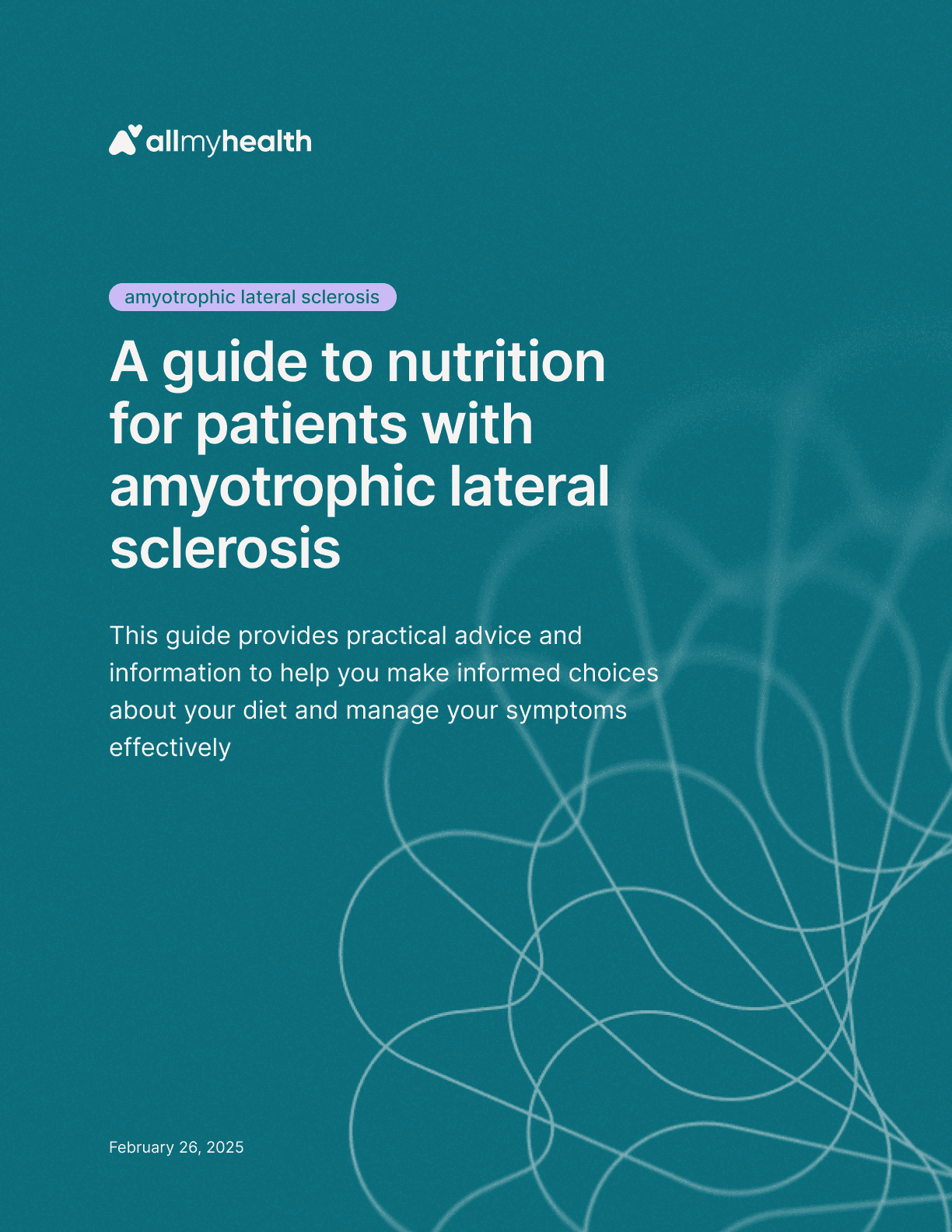
Amyotrophic lateral sclerosis
·
A guide to nutrition for patients with amyotrophic lateral sclerosis
Feb 26, 2025

Huntington's disease
·
A guide to nutrition for patients with Huntington's disease
Feb 26, 2025

Spinal muscular atrophy
·
A guide to nutrition for patients with spinal muscular atrophy
Feb 26, 2025
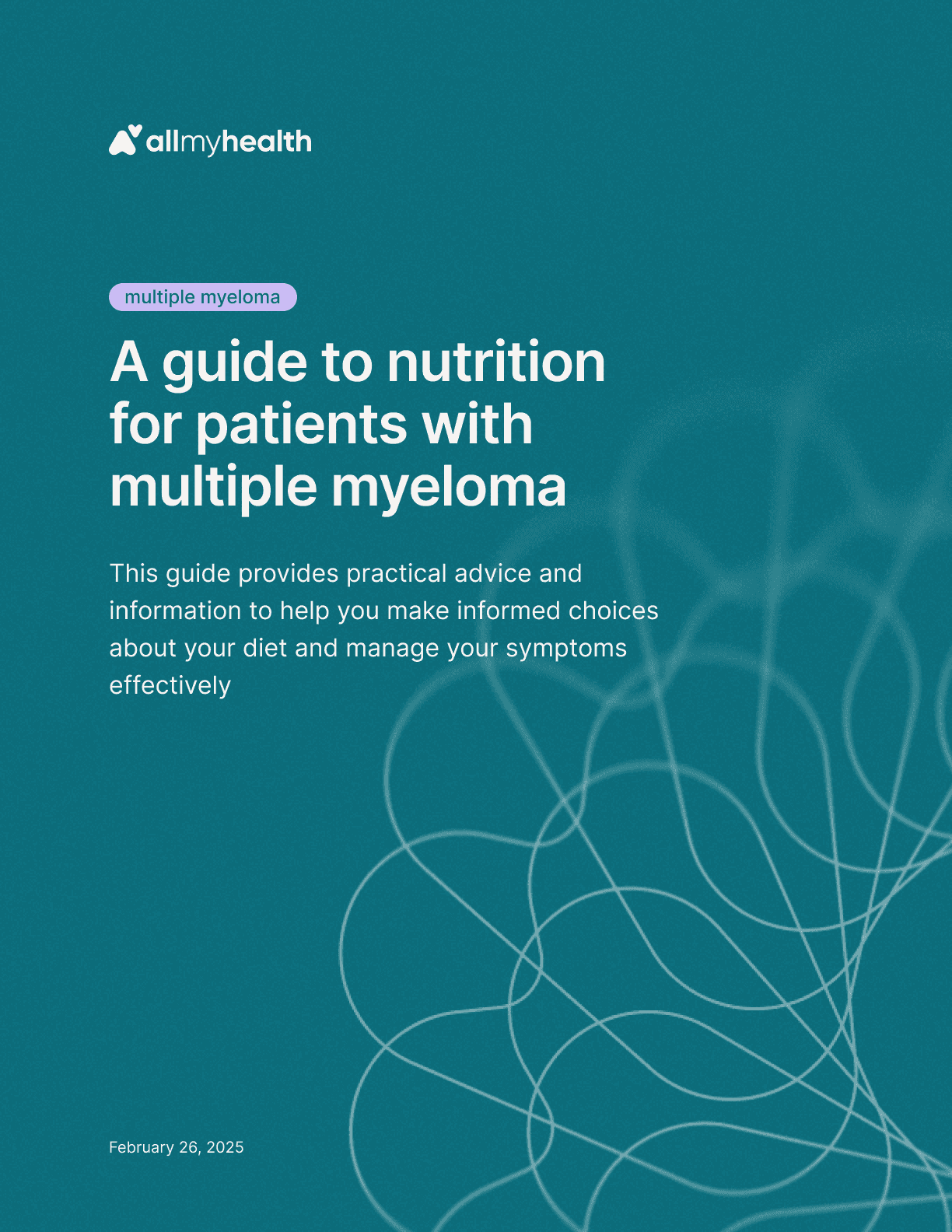
Multiple myeloma
·
A guide to nutrition for patients with multiple myeloma
Feb 26, 2025
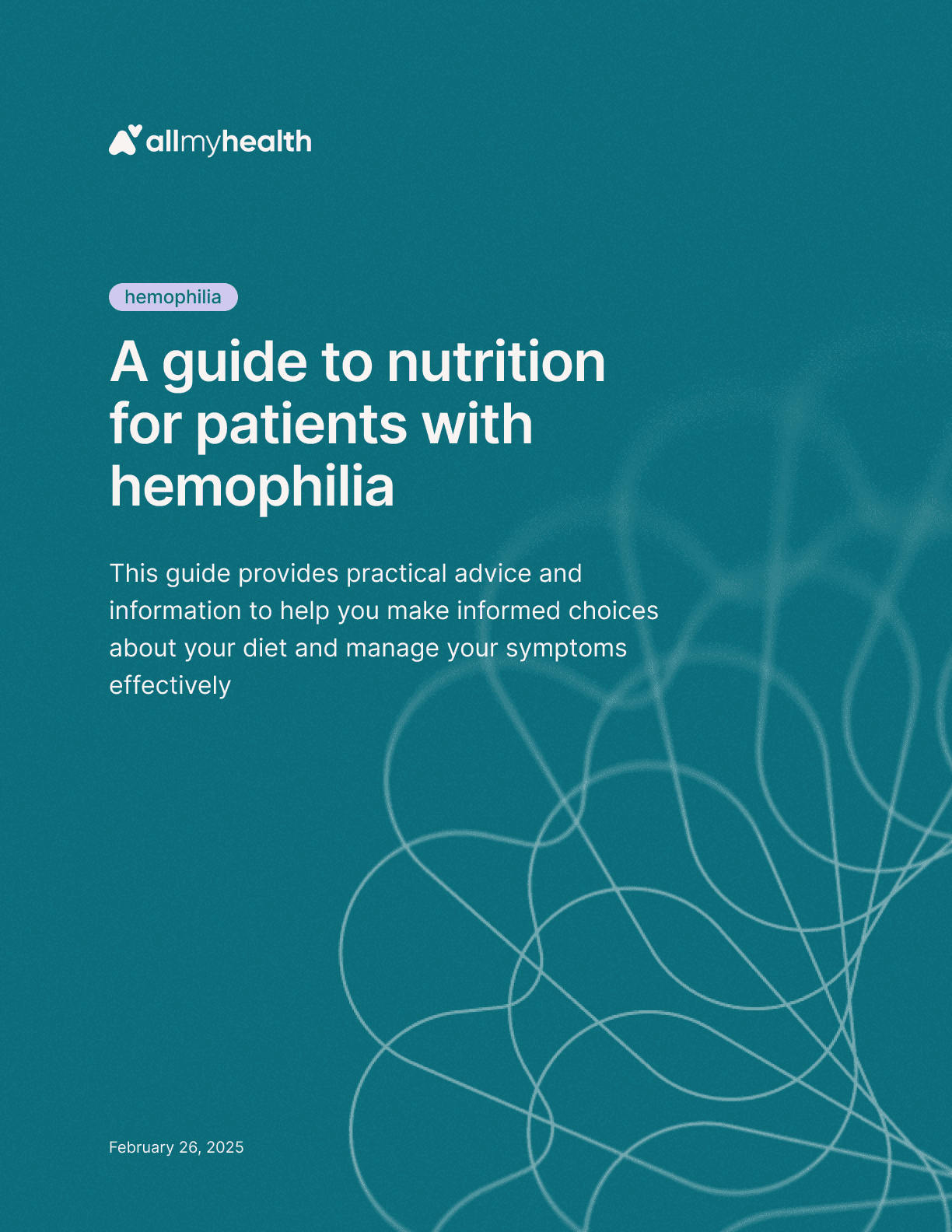
Hemophilia
·
A guide to nutrition for patients with hemophilia
Feb 26, 2025
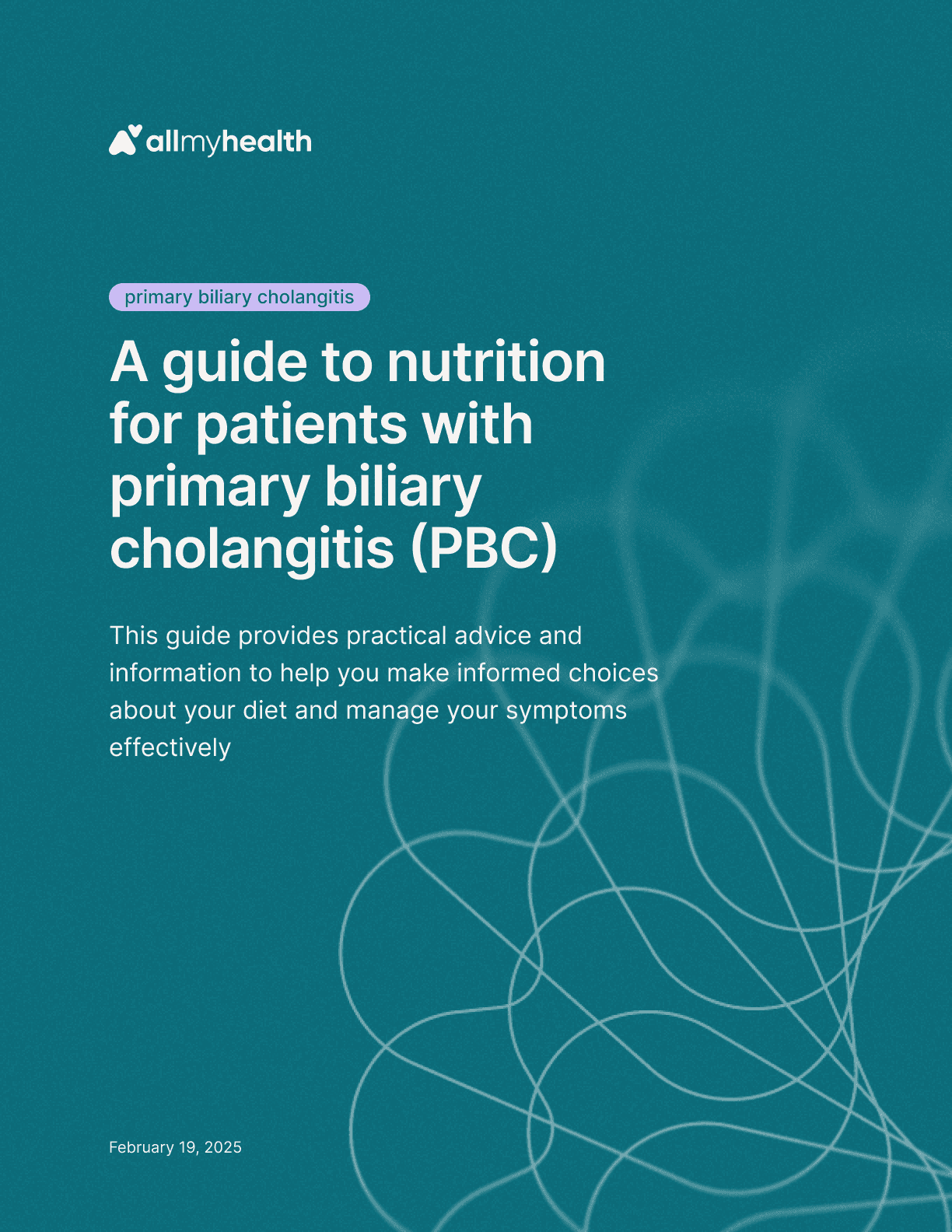
Primary biliary cholangitis
·
A guide to nutrition for patients with primary biliary cholangitis (PBC)
Feb 19, 2025

Duchenne muscular dystrophy
·
A guide to nutrition for patients with Duchenne muscular dystrophy
Feb 19, 2025

Friedreich's ataxia
·
A guide to nutrition for patients with Friedreich's ataxia
Feb 19, 2025
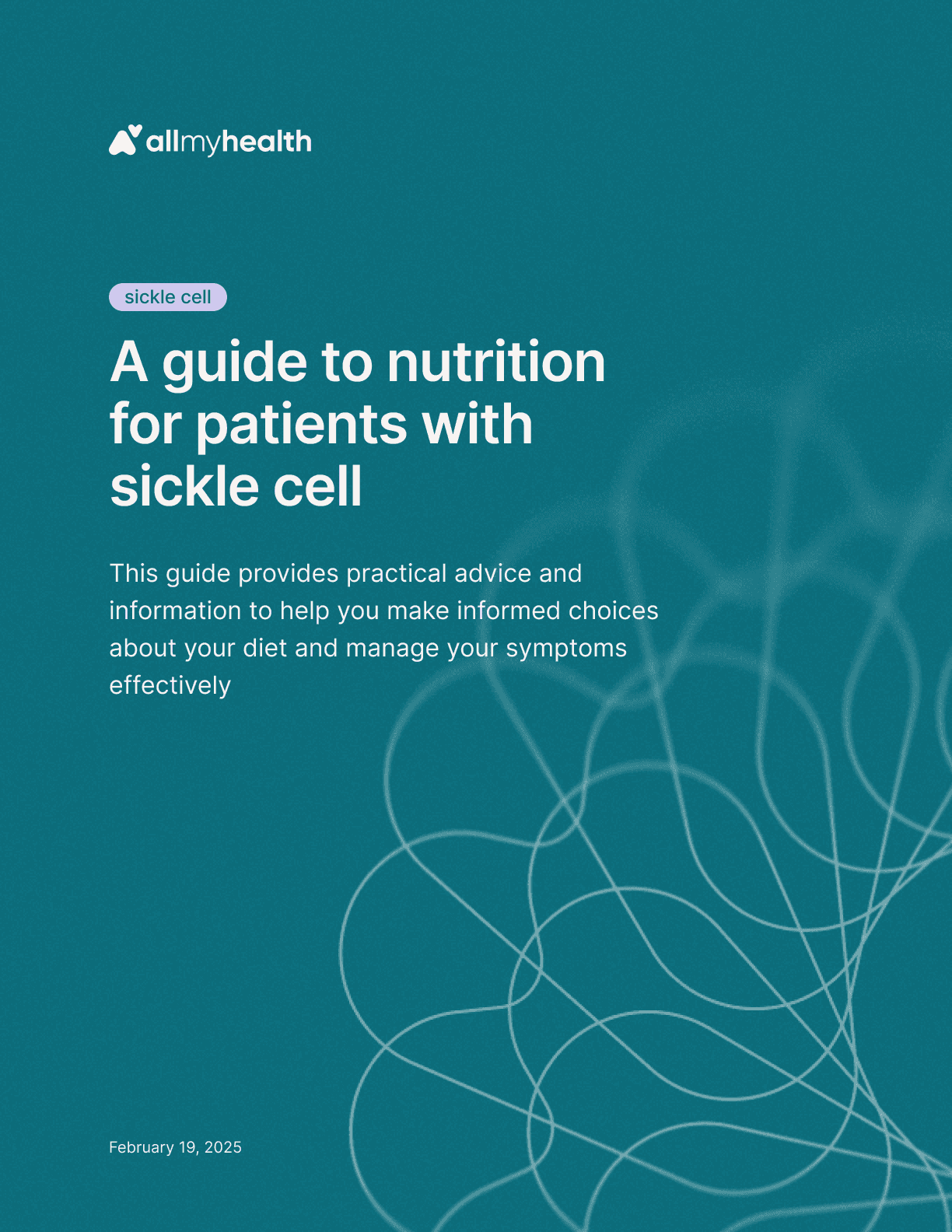
Sickle cell
·
A guide to nutrition for patients with sickle cell
Feb 19, 2025

Mantle cell lymphoma
·
A guide to nutrition for patients with mantle cell lymphoma
Feb 19, 2025
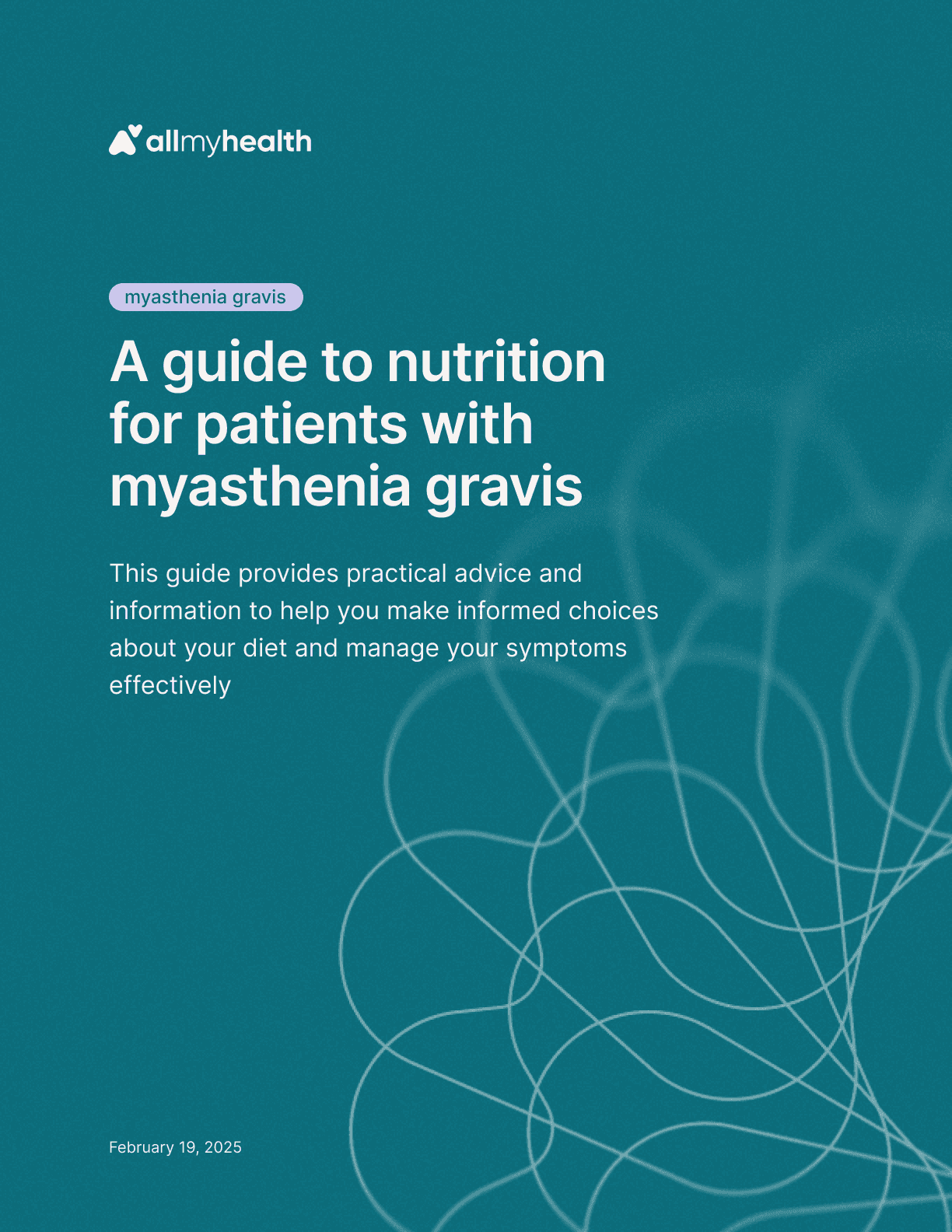
Myasthenia gravis
·
A guide to nutrition for patients with myasthenia gravis
Feb 19, 2025
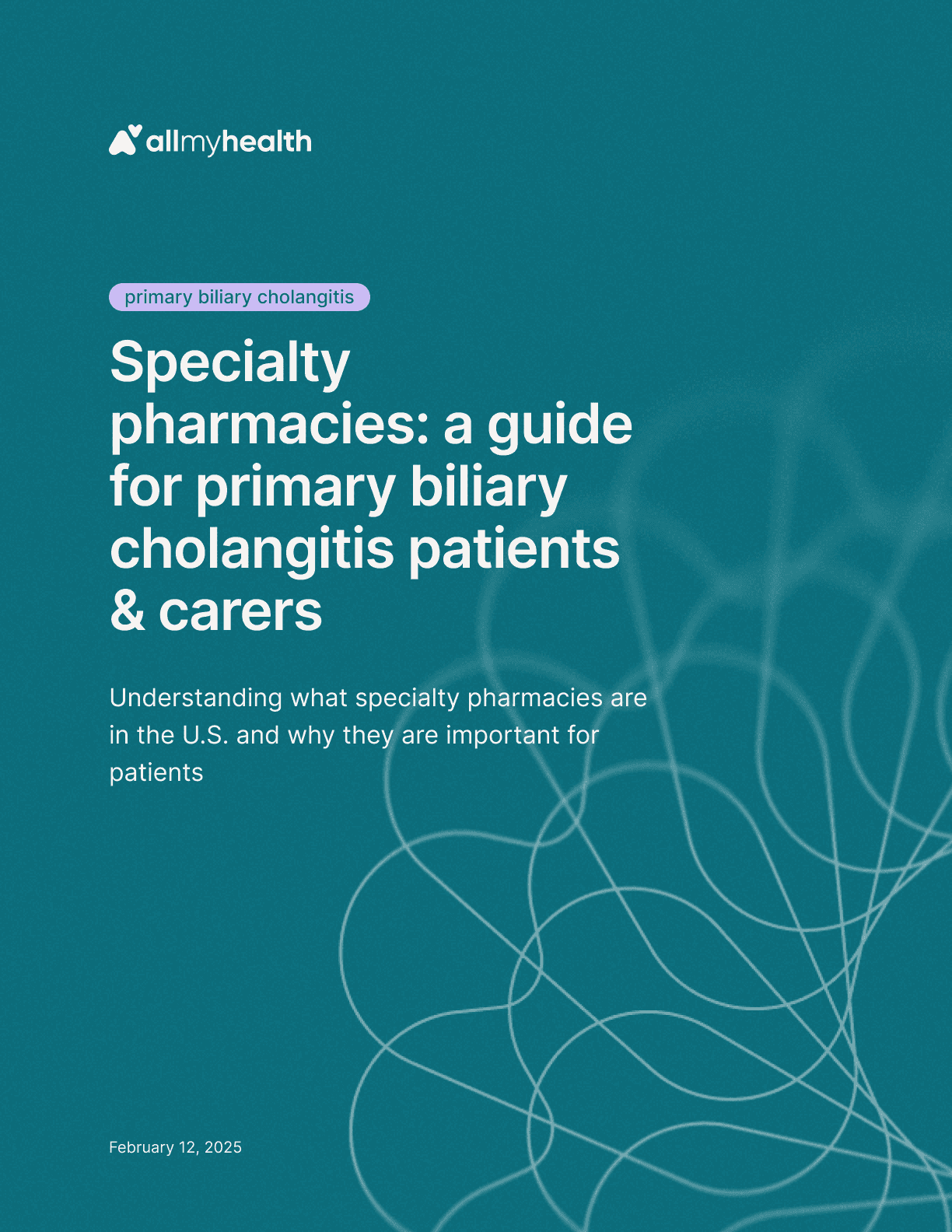
Primary biliary cholangitis
·
Specialty pharmacies: a guide for primary biliary cholangitis patients & carers
Feb 12, 2025
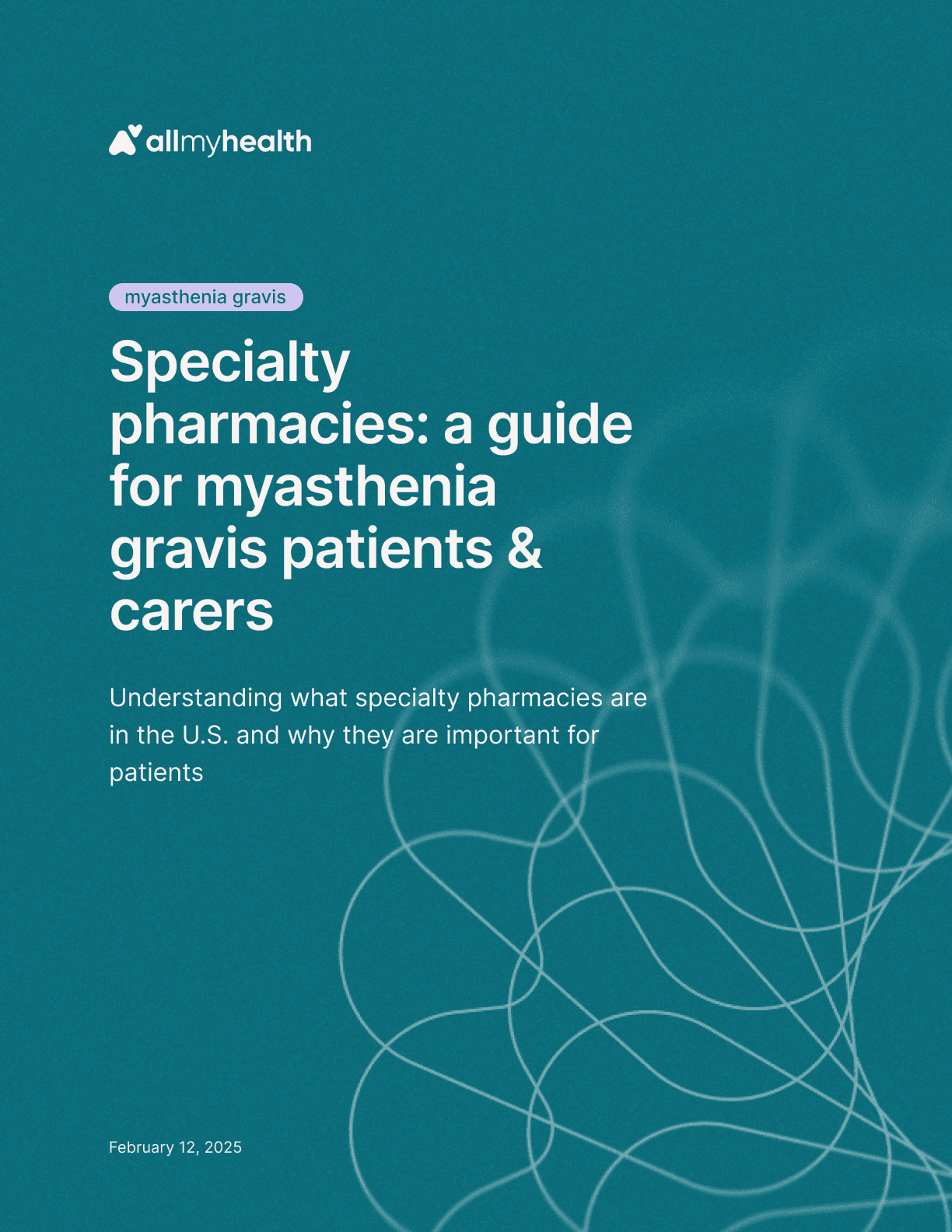
Myasthenia gravis
·
Specialty pharmacies: a guide for myasthenia gravis patients & carers
Feb 12, 2025
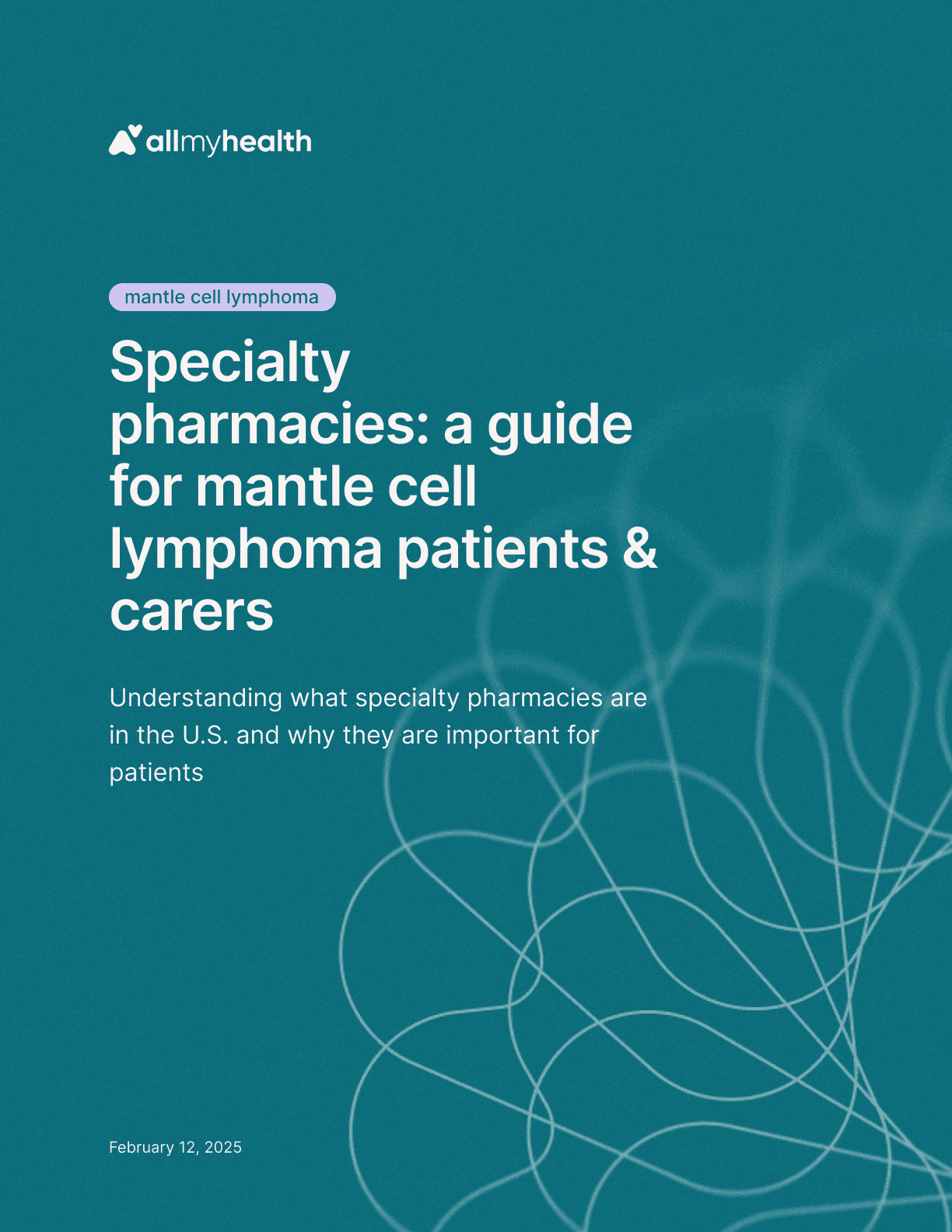
Mantle cell lymphoma
·
Specialty pharmacies: a guide for mantle cell lymphoma patients & carers
Feb 12, 2025

Friedreich's ataxia
·
Specialty pharmacies: a guide for Friedreich’s ataxia patients & carers
Feb 12, 2025

Duchenne muscular dystrophy
·
Specialty pharmacies: a guide for Duchenne muscular dystrophy patients & carers
Feb 12, 2025

Spinal muscular atrophy
·
Specialty pharmacies: a guide for SMA patients & carers
Feb 6, 2025
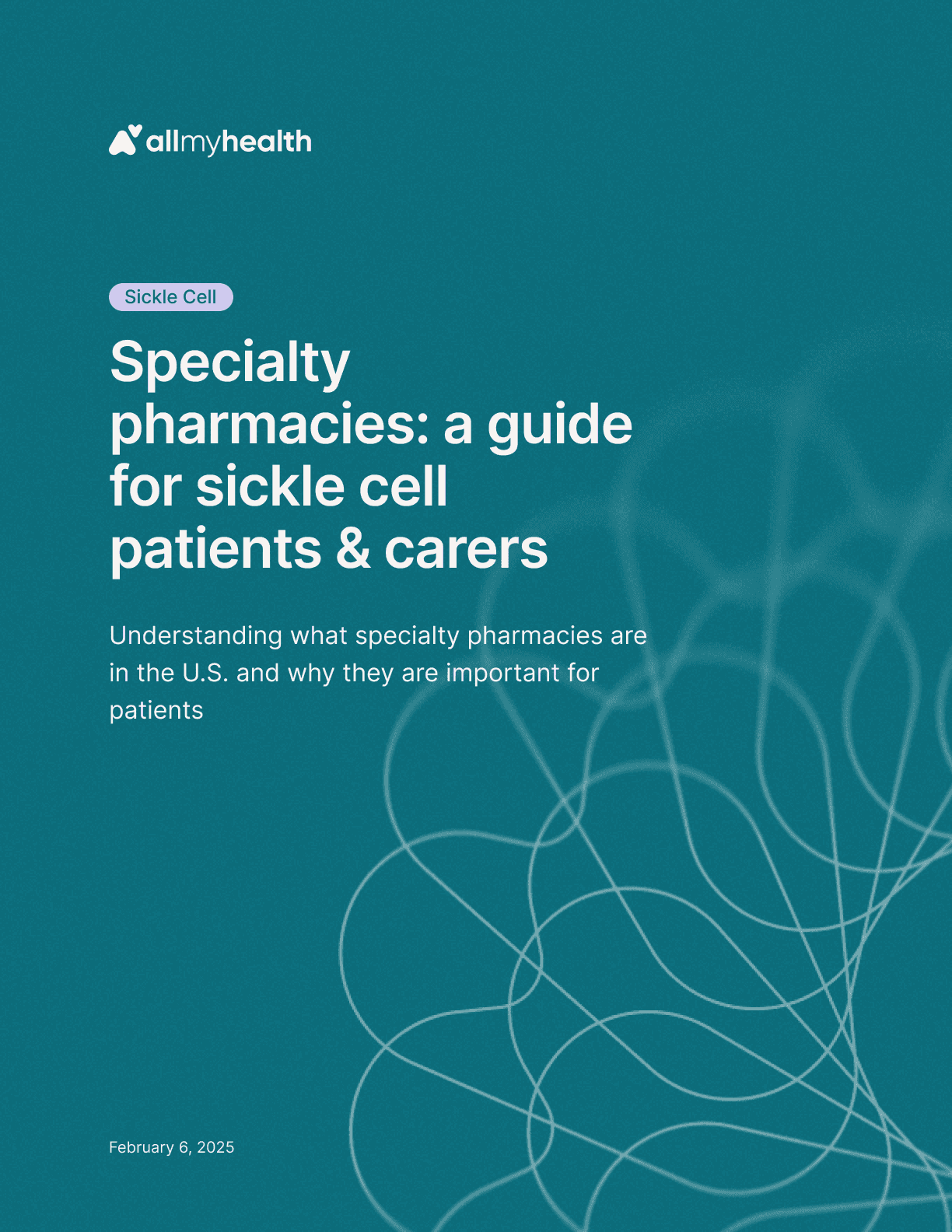
Sickle cell
·
Specialty pharmacies: a guide for sickle cell patients & carers
Feb 6, 2025
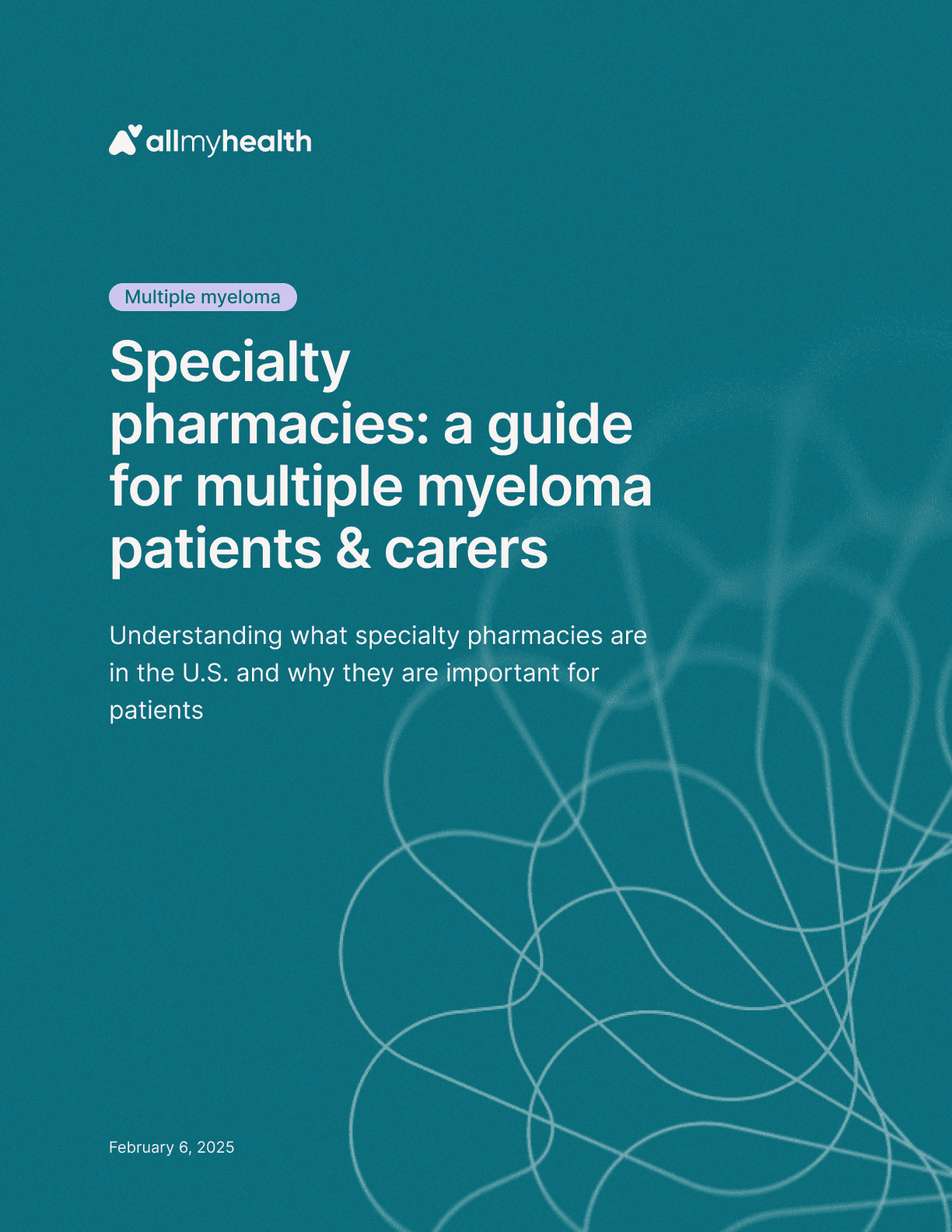
Multiple myeloma
·
Specialty pharmacies: a guide for multiple myeloma patients & carers
Feb 6, 2025
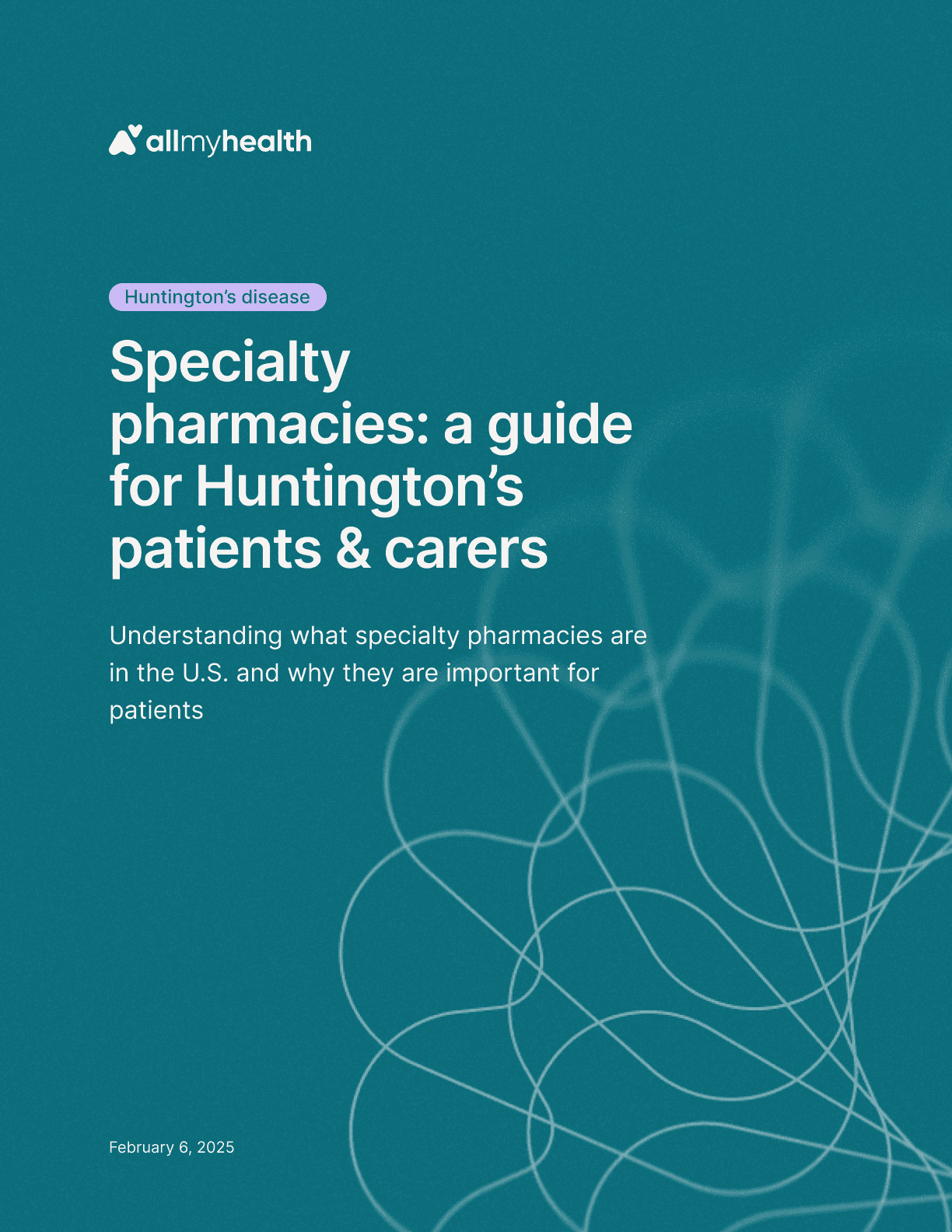
Huntington's disease
·
Specialty pharmacies: a guide for Huntington’s disease patients & carers
Feb 6, 2025
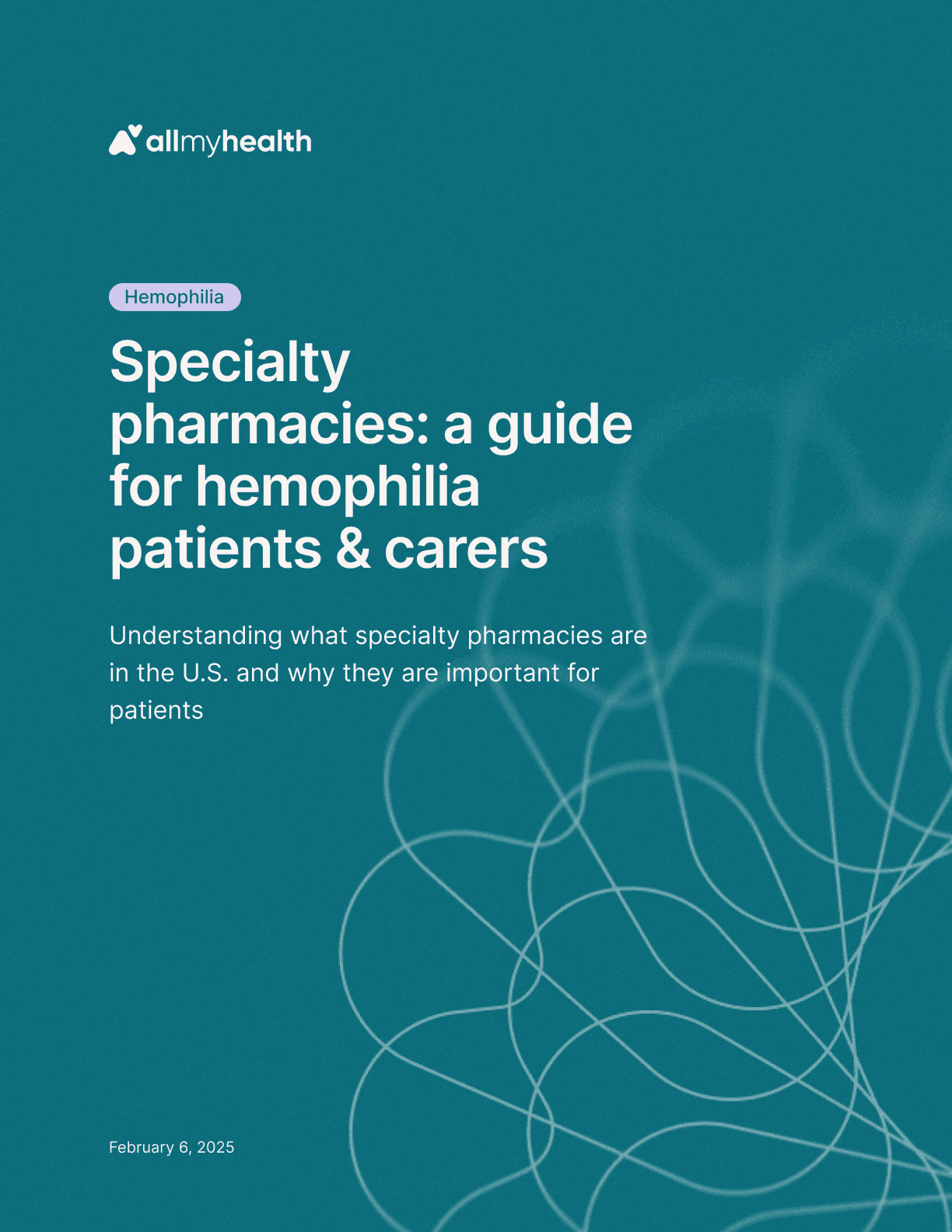
Hemophilia
·
Specialty pharmacies: a guide for hemophilia patients & carers
Feb 6, 2025

Amyotrophic lateral sclerosis
·
Specialty pharmacies: a guide for ALS patients & carers
Feb 6, 2025

Duchenne muscular dystrophy
·
Understanding Duchenne muscular dystrophy: a guide for patients
Jan 30, 2025

Friedreich's ataxia
·
Understanding Friedreich's ataxia: a guide for patients
Jan 30, 2025

Hemophilia
·
Understanding hemophilia: a guide for patients
Jan 30, 2025
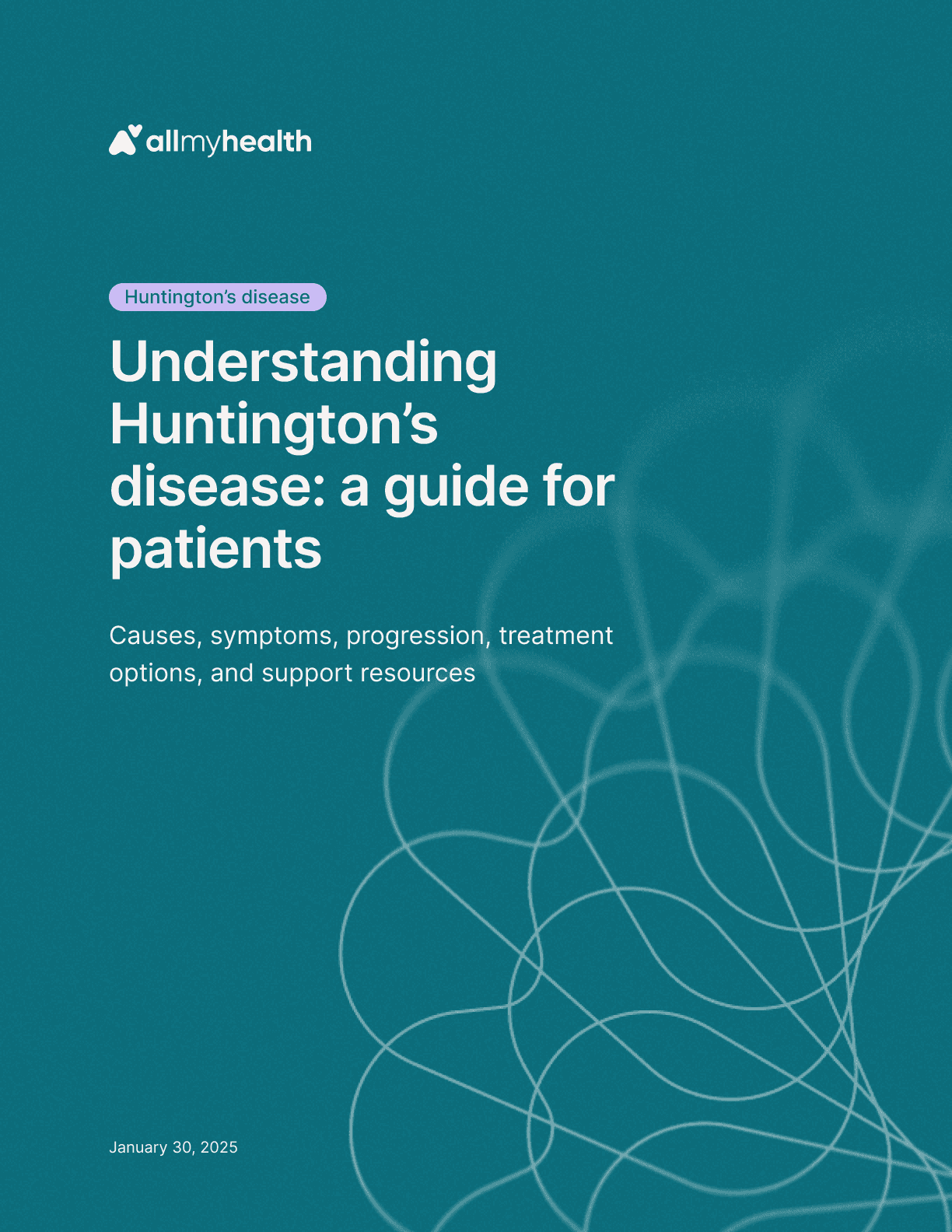
Huntington's disease
·
Understanding Huntington’s disease: a guide for patients
Jan 30, 2025
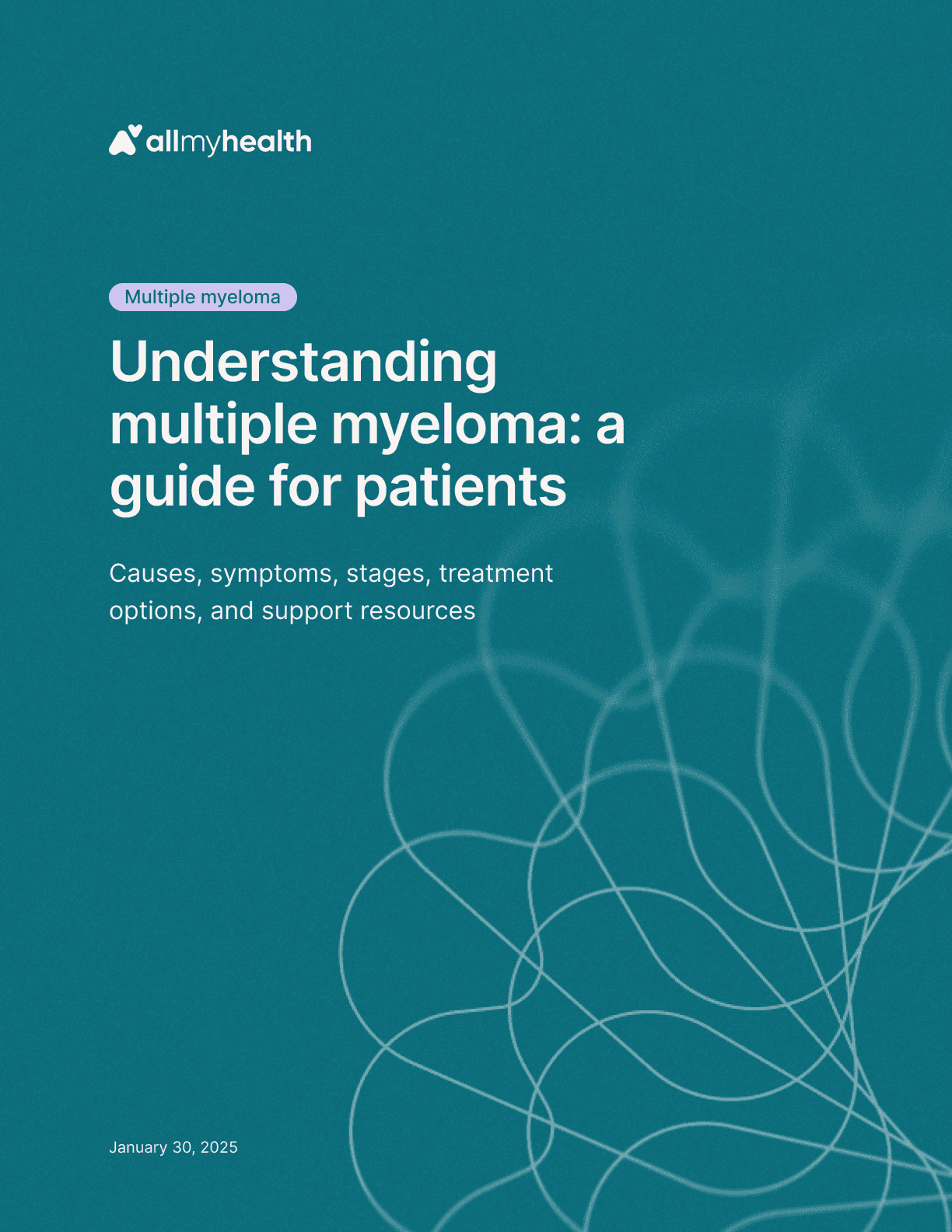
Multiple myeloma
·
Understanding multiple myeloma: a guide for patients
Jan 30, 2025

Primary biliary cholangitis
·
Understanding primary biliary cholangitis: a guide for patients
Jan 30, 2025
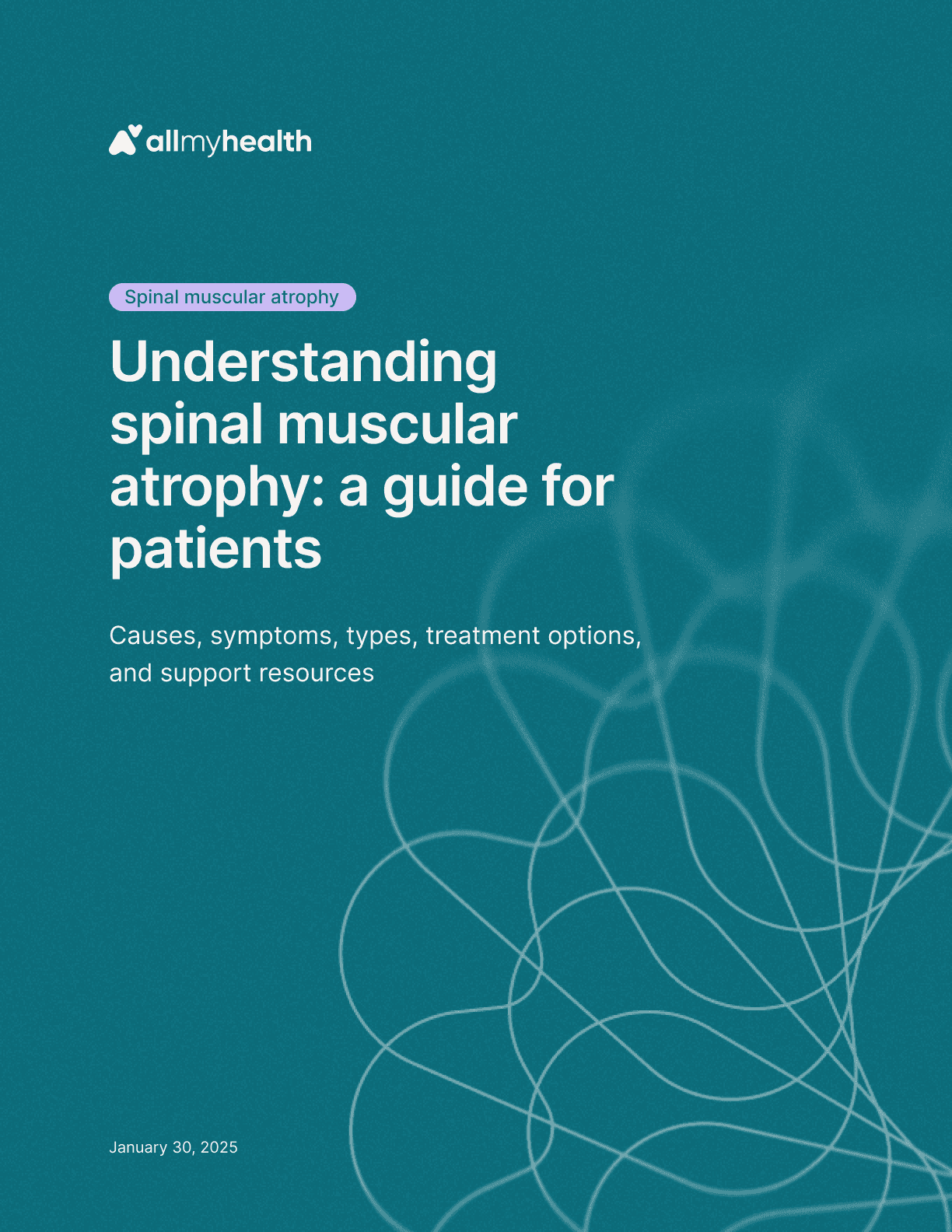
Spinal muscular atrophy
·
Understanding spinal muscular atrophy: a guide for patients
Jan 30, 2025

Amyotrophic lateral sclerosis
·
Understanding amyotrophic lateral sclerosis: a guide for patients
Jan 23, 2025
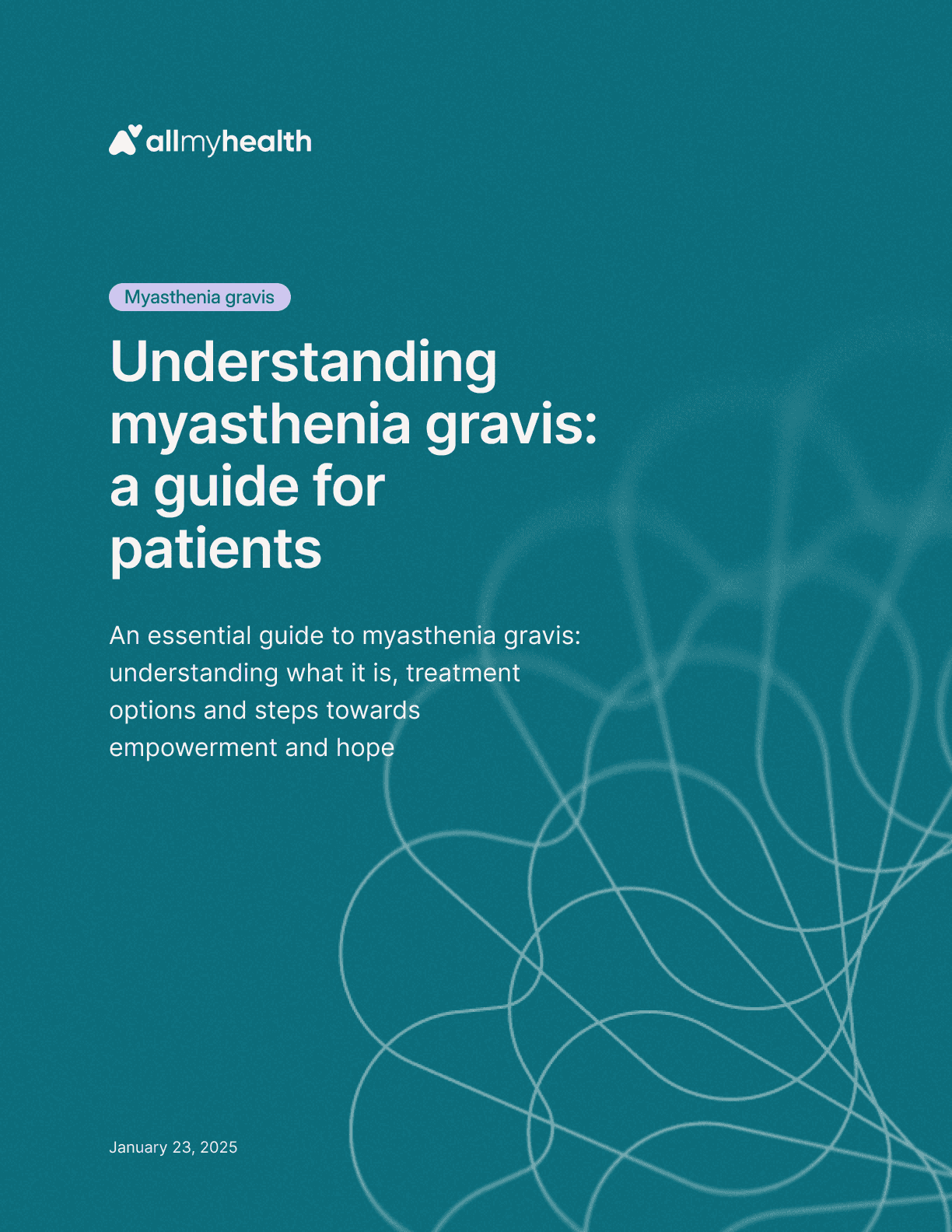
Myasthenia gravis
·
Understanding myasthenia gravis: a guide for patients
Jan 23, 2025
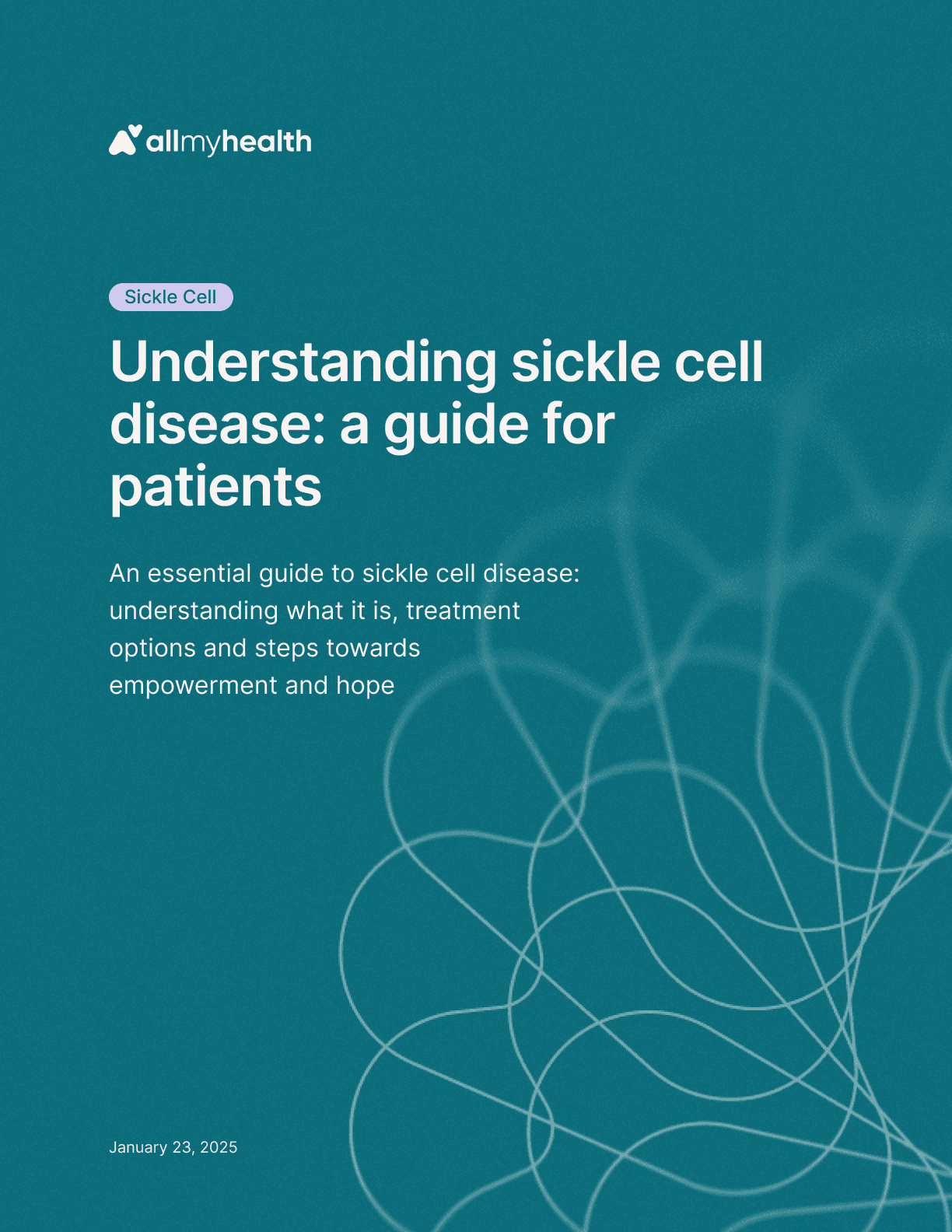
Sickle cell
·
Understanding sickle cell disease: a guide for patients
Jan 23, 2025
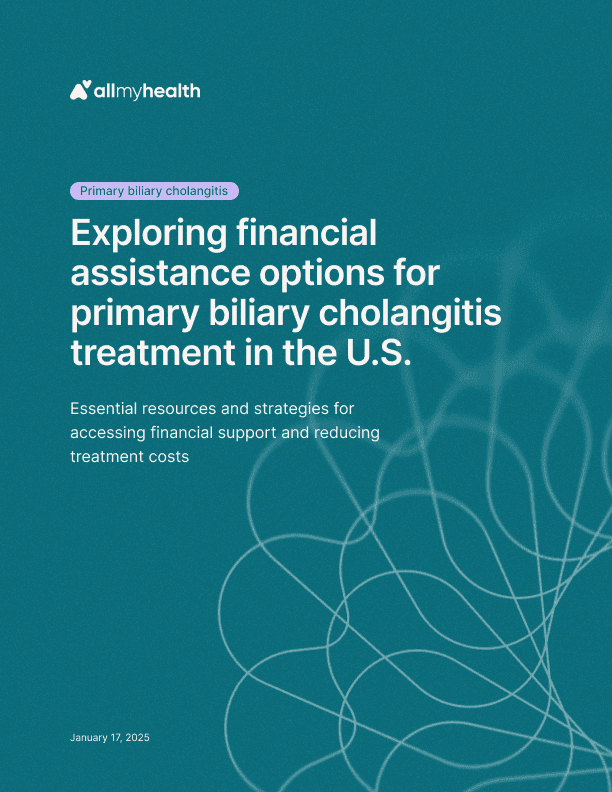
Primary biliary cholangitis
·
Exploring financial assistance options for primary biliary cholangitis treatment in the U.S.
Jan 17, 2025
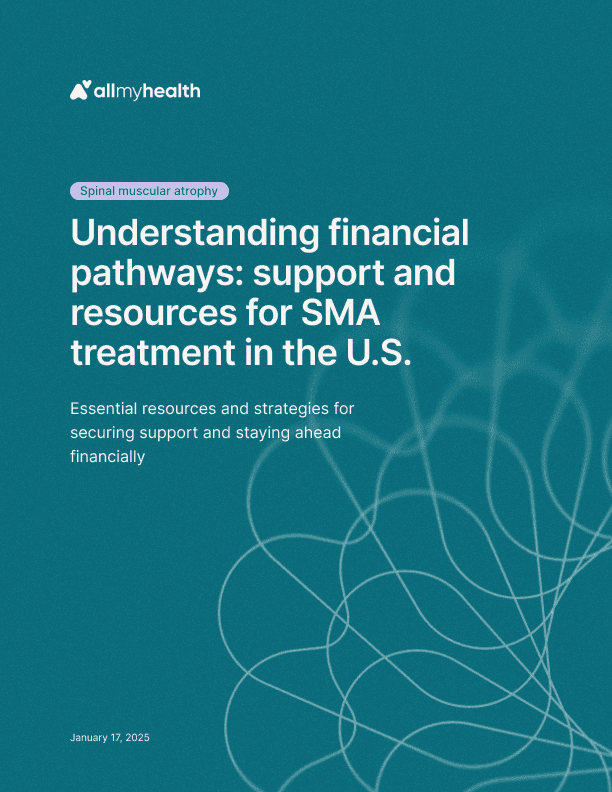
Spinal muscular atrophy
·
Understanding financial pathways: support and resources for SMA treatment in the U.S.
Jan 17, 2025

Duchenne muscular dystrophy
·
Financial strategies for muscular dystrophy in the U.S.
Jan 17, 2025

Hemophilia
·
Navigating financial assistance for hemophilia treatment in the U.S.
Jan 17, 2025
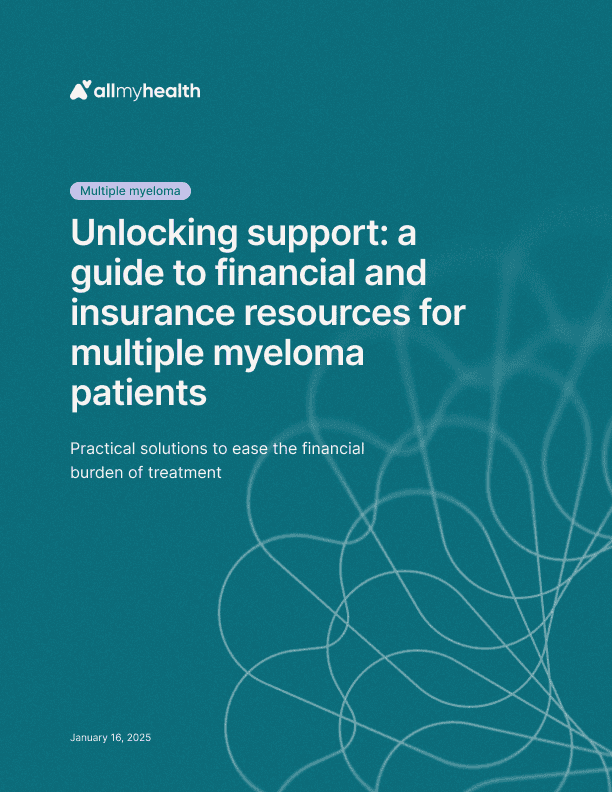
Multiple myeloma
·
Unlocking support: a guide to financial and insurance resources for multiple myeloma patients
Jan 17, 2025

Friedreich's ataxia
·
Navigating Friedreich’s ataxia in the U.S.: a practical guide to support and financial planning
Jan 17, 2025
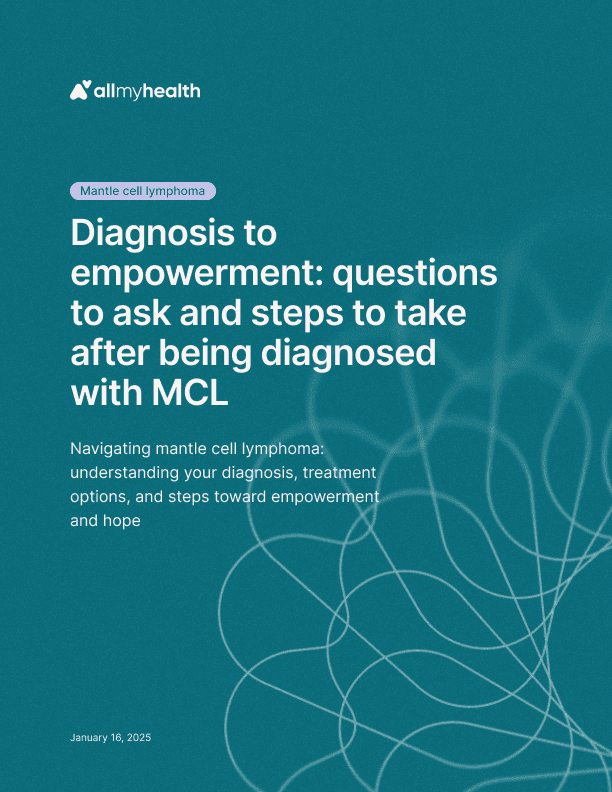
Mantle cell lymphoma
·
Diagnosis to empowerment: questions to ask and steps to take after being diagnosed with MCL
Jan 16, 2025
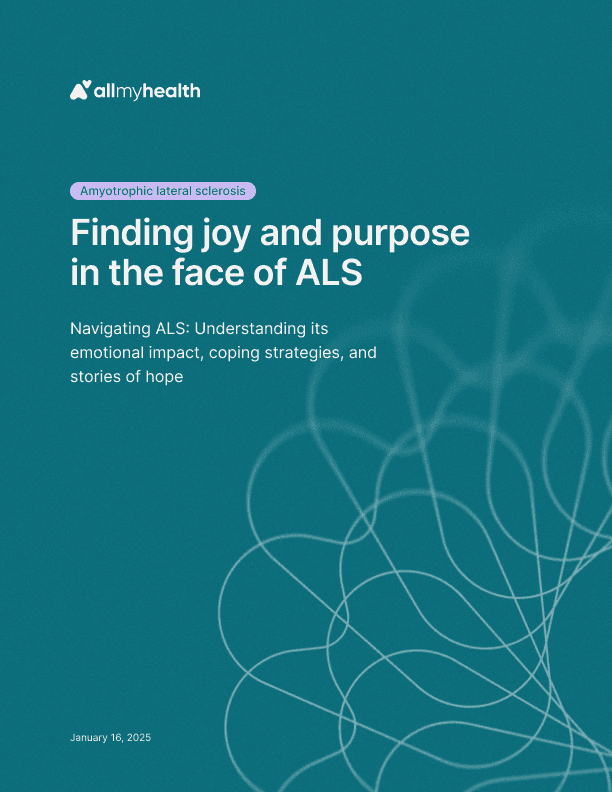
Amyotrophic lateral sclerosis
·
Finding joy and purpose in the face of ALS
Jan 16, 2025
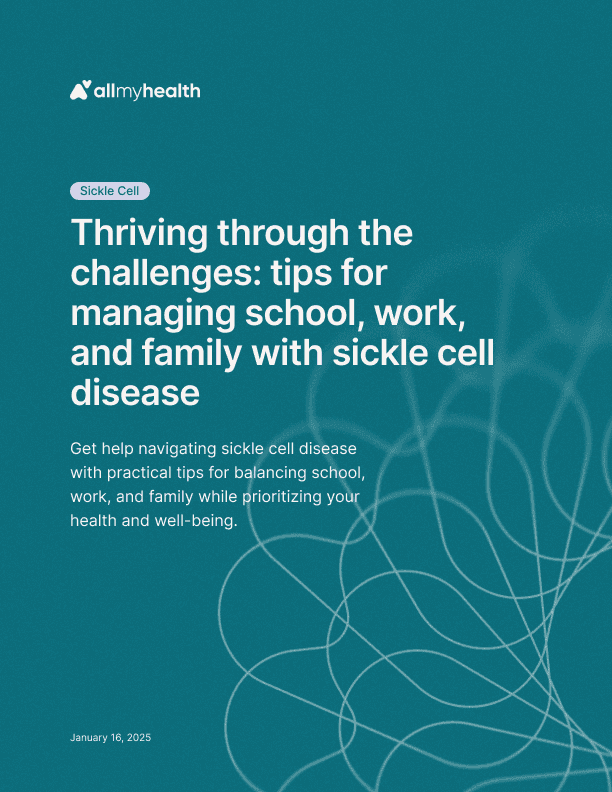
Sickle cell
·
Thriving through the challenges: tips for managing school, work, and family with sickle cell disease
Jan 16, 2025

Myasthenia gravis
·
Financial strategies for living with myasthenia gravis in the U.S.: a guide to long-term planning
Jan 16, 2025